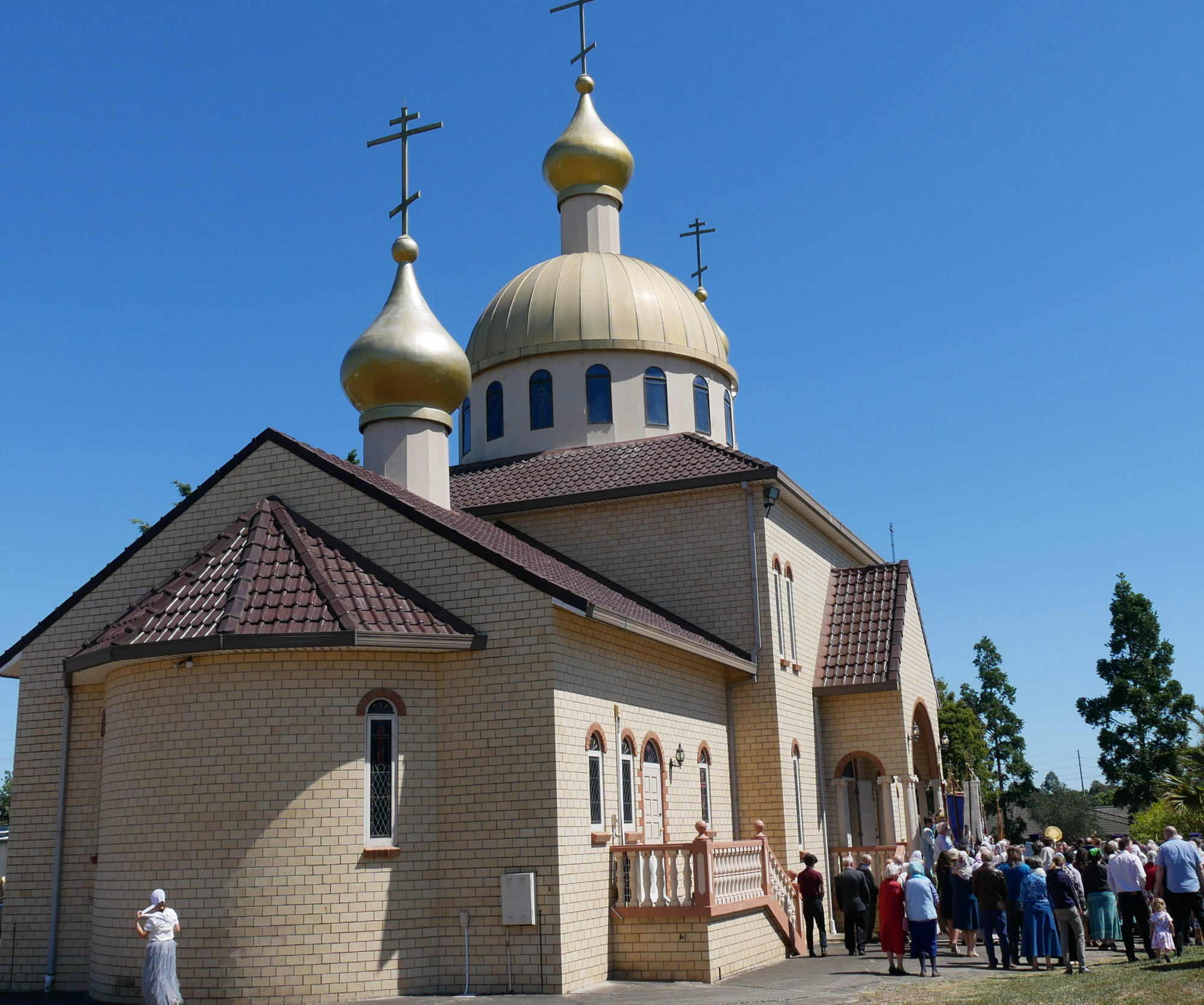Parish History
While the history of the Orthodox Church goes back to Jesus Christ (even arguably, to the beginning of all things), our parish itself has been functioning since 1956. The history of its establishment is one of great faith, personal sacrifice and far-reaching endeavour on the parts of a number of people. It is also the story of a family, or families, who fled their homeland due to conditions of unimaginable religious persecution, including mass executions of people of faith. These refugees from communism are the founders of our holy temple, and it is their story which we attempt to describe here based on the records available to us.
The Shishkoffs
Evfimiy (also Efim) Vasilievich Shishkoff together with his wife Paraskeva Trofimovna Shishkova, and their four children fled to Persia (present day Iran) from the Ufa Governorate (today’s Republic of Bashkortostan, Russia) in 1934 for the dual purpose of surviving communist persecution and freedom of religion.
The Promise
While still in the USSR, Evfimiy Vasilievich gave a pledge that, if the Lord would help his family to successfully avoid persecution at the hands of the communists, then he, out of gratitude for their restored freedom, would build a church. It is understood that he prayed before a copy of the Vladimir Icon of the Mother of God which was one of his family icons, and that he called upon the Most Holy Theotokos to intercede for them.
Coming to Australia
In October of 1951, the Shishkoff family arrived in Australia from Persia. They were one family of a number of Russians who fled Persia. Evfimiy Vasilievich established himself as a simple labourer at the Tennyson Powerhouse, and in very short order, purchased a house in the Brisbane suburb of Rocklea, and next to the house a 4 acre (approx. 4047 sq. m) block of land.
At the beginning of 1954, Evfimiy, his son George Evfimovich, as well as son-in-law Leonid Feodorovich Kuchkin set themselves to the task of building, and in the course of 16 months there appeared in Rocklea a small wooden church, dedicated to the honor of the Vladimir Icon of the Mother of God, (also known in English as the Blessed Virgin of Vladimir, or the Vladimir Icon of the Theotokos, or Our Lady of Vladimir). Evfimiy Vasilievich brought with him a copy of this holy and ancient relic of the Russian Orthodox Church to Australia from the USSR.
Consecration of the church
On Sunday 26 August 1956, two days before the feastday of the Dormition of the Mother of God, the church was consecrated by His Eminence Savva (Raevsky), Archbishop of Sydney, Australia and New Zealand of the Russian Orthodox Church Outside of Russia. On this day, the other Russian Orthodox parishes were closed, and clergy, parishioners and singers from all over Brisbane gathered together for the mutual celebration of the consecration of the new church in Rocklea. During the service, the archbishop ordained Gregory Eliseevich Malisheff to be the second deacon at the St Nicholas Cathedral at Woolloongabba, and Evfimiy Vasilievich was tonsured to the rank of reader for the Vladimir Icon parish in Rocklea.
Interestingly, on 23 August, the Courier-Mail newspaper ran a story on the upcoming consecration.
Our First Rector
The first rector to be assigned to the parish was Fr Dimitriy Diomidovich Simonow a few months after its consecration, on 31 December 1956.
Fr Dimitriy had been ordained to the diaconate, and then to the priesthood earlier that same year.
The Passing of our Founder
Sadly, Reader Evfimiy fell asleep in the Lord on the 19th of January 1957 (the Feastday of Theophany) less than five months after the consecration service. Evidently, having fulfilled his promise to the Lord through the enormous and blessed effort of acquiring the land, building the church and donating it to the Church, the Lord was ready to receive one of his own.
Reader Evfimiy’s funeral was the first one served in the church which he built.
Our Second priest
With the departure of the Simonow family to Melbourne in 1958, the parish came under the care of Fr Leonid Upshinsky, who had been assigned as rector of the St Seraphim of Sarov parish in Hawthorne St Woolloongabba. While he was only at the parish for approximately one year, Fr Leonid was influential in the lives of a number of parishioners, being a very experienced archpriest who was formerly the secretary of the Bishop’s Council of Harbin (one of the principle centres of the White Russian Diaspora, following the Russian Revolution). He moved to San Francisco in 1959 where he became the diocesan secretary for the Western American Diocese, as well as personal secretary to the Holy Blessed St John of Shanghai and San Francisco.
